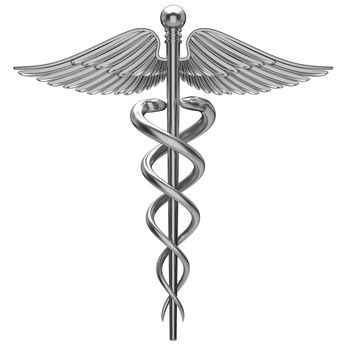The AHA guidelines recommend in-confident performers should, at least, perform chest compressions upon the patient, since studies show chest compressions can be as effective as the combination of CPR. Untrained rescuers should provide Compression-only CPR since it's easy for an operator (dispatcher) to provide and guide instructions over the telephone. Remember, it is a priority to activate the Emergency Response System immediately and to provide chest compressions.
The expectation is that Health Care Providers (HCP's) are properly trained in CPR and efficiently able to perform both compressions and ventilation. Priority for the HCP (especially if alone) should be to activate the Emergency Response System as well as perform compressions. Priority may change sequence depending on circumstances (i.e., AED availability).
When a cardiac arrest is presumed begin CPR. The risk of harm is low if the patient is not in cardiac arrest. For patients in cardiac arrest with a non-shockable rhythm, it is reasonable to administer epinephrine as soon as feasible.
When to Activate Emergency Response System
If possible, send someone to activate the Emergency Response System, and begin CPR immediately. As soon as it’s available use an AED. If you’re not with someone (and you do not have a mobile phone) leave the patient to activate the Emergency Response System while also retrieving an AED.
Team Resuscitation: HCP’s can use flexibility when activating the emergency response to fit the provider’s clinical setting, for better management.
When to stop CPR
If the patient regains a pulse, if the area becomes unsafe if cardiac arrest lasts longer than 30 minutes if the rescuer(s) is too exhausted, ordered to stop or if Emergency Medical Services (EMS) arrives. Or, if these complications arise: Fractures, punctures, lung ruptures or collapses, rib separation, bruises of the heart and/or lungs.
Hands-Only CPR:
If you witness a sudden cardiac arrest and attempt CPR, you can dispense with mouth-to-mouth breathing. According to the American Heart Association, performing hands-only CPR can be just as effective as performing CPR with mouth-to-mouth. That means chest compressions alone are sufficient until trained responders arrive on the scene.
Do note that conventional CPR is still the way to go with children and infants. However, as most pediatric cardiac arrests are caused by asphyxiation, it may not be possible to perform rescue breaths. If so, go ahead with the hands-only method as it is better than no CPR at all.
To perform hands-only CPR, first, kneel beside the person who needs assistance. Get into position by placing the heel of one hand on the center of their chest, and the heel of the other hand over the first hand. Interlace your fingers. Keep your shoulders lined directly over your hands and your arms straight.
Once in position, start pushing hard and fast. Make use of your body weight to help make compressions, which should be at least two inches deep and occur at a rate of at least one-hundred compressions per minute. Allow the chest to rise completely between each compression.
From there, keep pushing until you see breathing or obvious indications of life. You can also stop once a trained responder or EMS professional is ready to take over or an AED becomes available. Stopping may also be necessary if you are unable to carry on due to exhaustion or the scene becomes unsafe.




